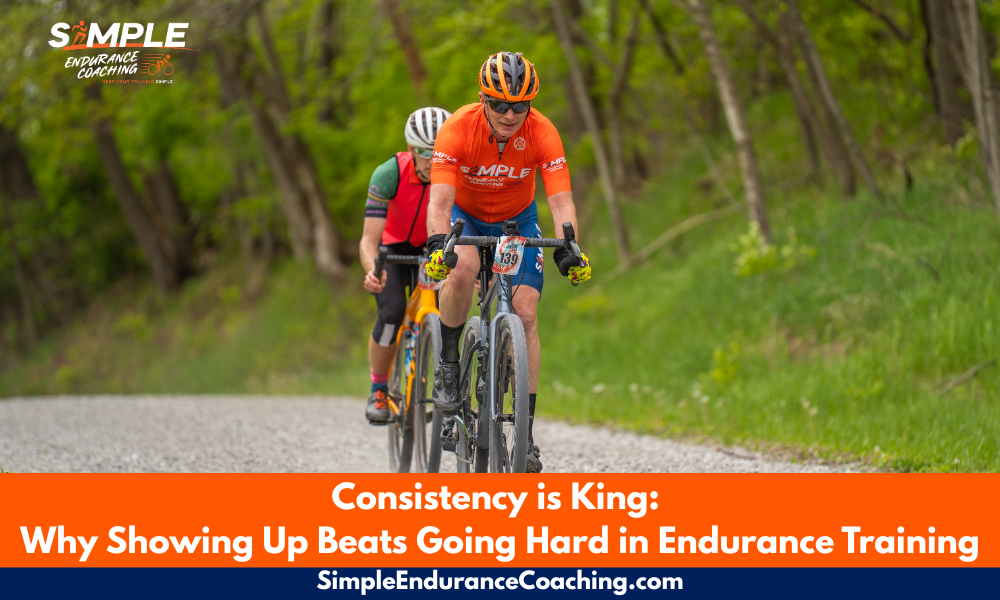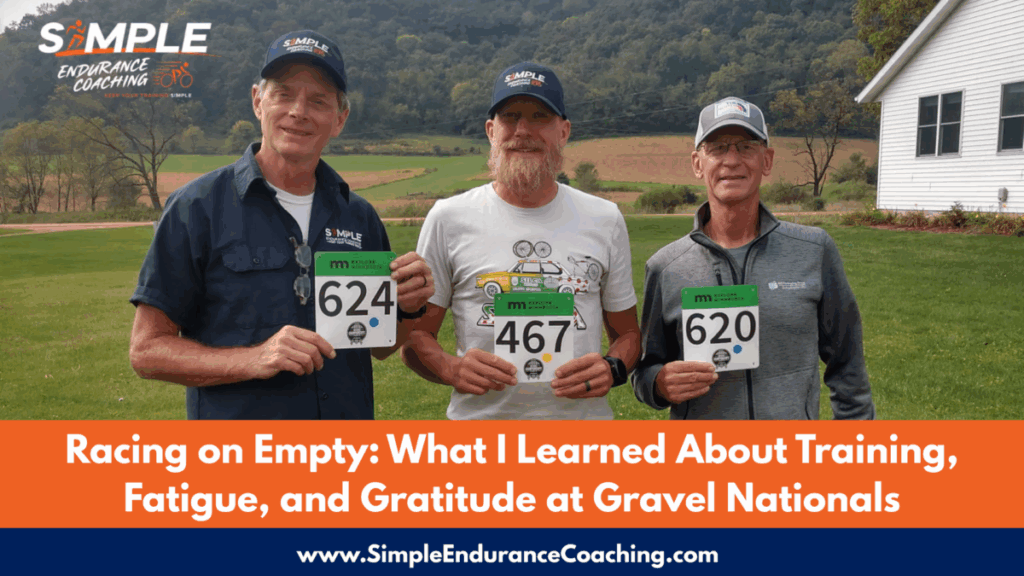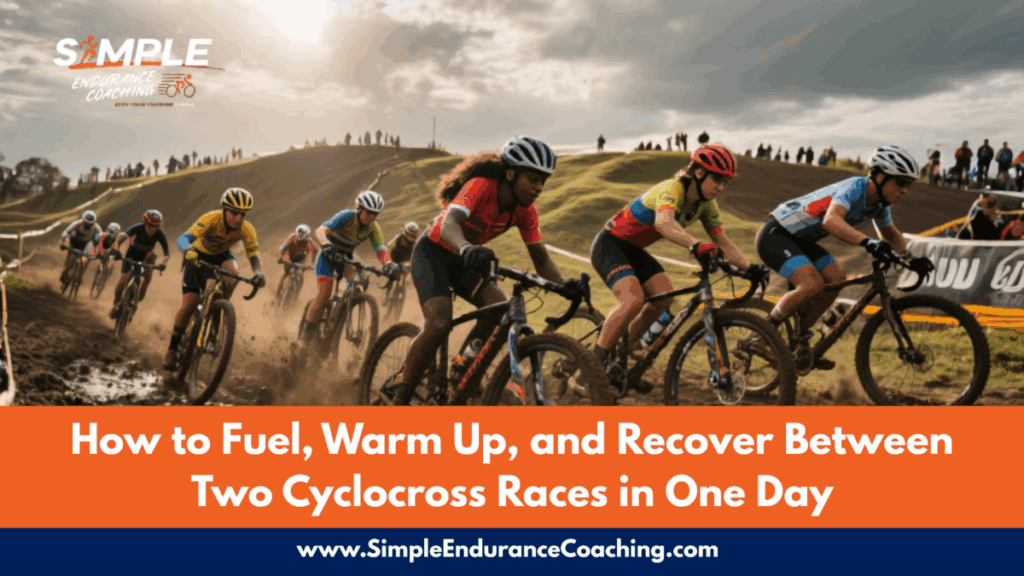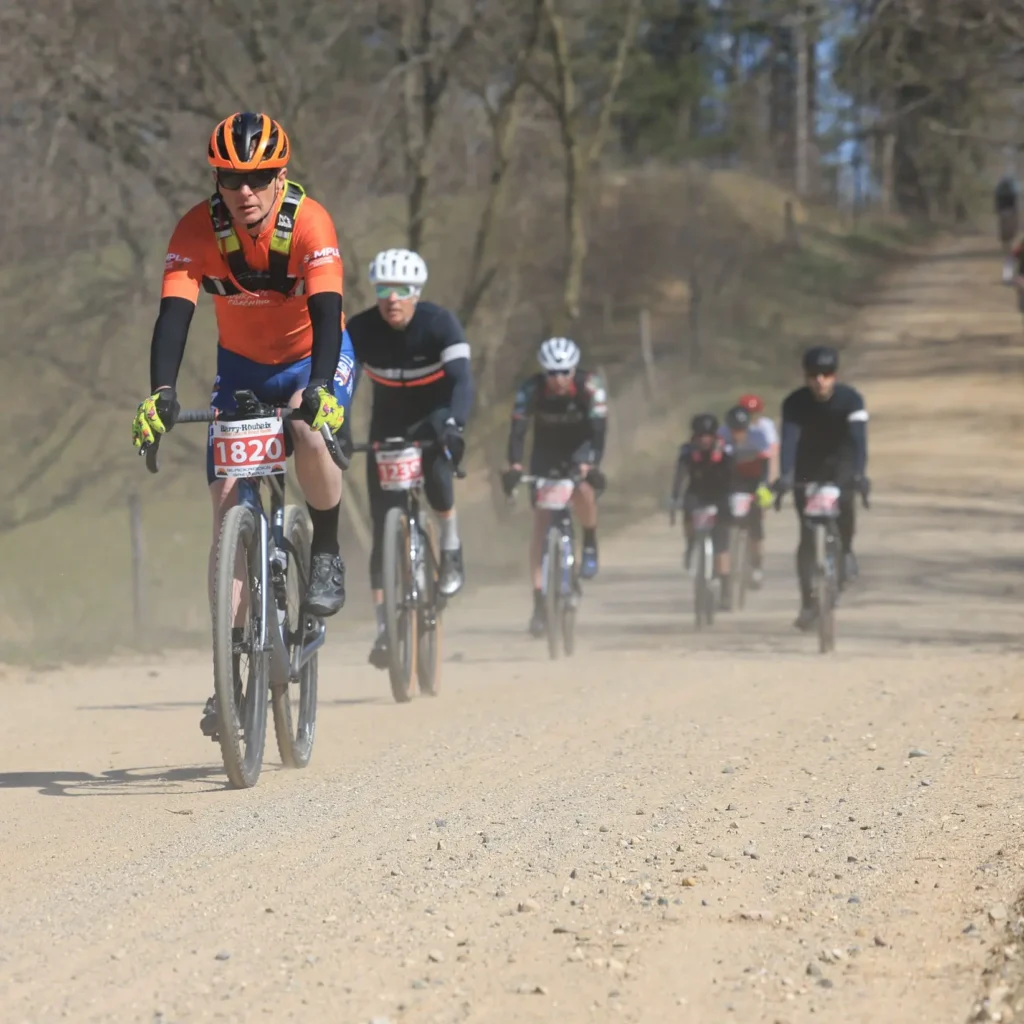Consistency Is King: Why Showing Up Beats Going Hard in Endurance Training

by Coach Paul Warloski You can have the best training plan, the smartest coach, and the fanciest gear. But none of it matters if you’re not consistent with your training, even if your schedule is extra busy. Consistency in triathlon, gravel racing, cyclocross, or trail running is the quiet, unglamorous key to endurance success, more […]
Race-Week Fueling: How to Eat During Your Taper for Peak Performance

by Coach Paul Warloski You’ve reduced your training volume to freshen up before your A event, whether it’s cyclocross, gravel bike race, or a trail run. Now match it with smart nutrition during your taper. During the seven to 14 days before your A-priority race, the goal isn’t to eat less; it’s to arrive topped […]
When Your Gut Rebels on the Run: Why GI Distress Happens—and What You Can Do About It

by Coach Nicole Ford Here are Three Things to Know About GI Distress During Running 1. GI distress is common and multifactorialUp to half of endurance runners experience GI symptoms, especially in long ultramarathons. Causes include reduced gut blood flow, heat stress, mechanical jostling, and certain fueling or hydration strategies. 2. Training the gut is […]
Racing on Empty: What I Learned About Training, Fatigue, and Gratitude at Gravel Nationals

by Coach Paul Warloski Three Things to Know About Gravel Nationals 2025 1. Even an A Race Can Go Sideways — and Still Be ValuableDespite not having the result I trained for, Gravel Nationals was still a meaningful experience, offering challenge, camaraderie, and perspective. Success isn’t always measured by a finish place. 2. Fatigue and […]
How Often Should You Eat During a Long Bike Race?

When you’re racing or riding for hours, keeping your energy steady is critical. Most cyclists know they should eat and drink on the bike—but the real question is: how often should you fuel? Every 20 minutes or every hour? Research gives us some clear answers – sort of. The bottom line is that it seems […]
Why Every Runner Should Do Strides: The Small Habit With Big Payoffs

by Coach Paul Warloski If you’ve been running for a while, you’ve probably heard about strides. They’re short, fast accelerations, usually tacked onto the end of easy runs, that sharpen your mechanics and give your legs a taste of speed. Strides don’t take long, they don’t leave you sore, and they don’t replace harder interval […]
Fuel for the Work Required: A Periodized Nutrition Approach for Everyday Endurance Athletes

Training is periodized for a reason—you manipulate load, intensity, and recovery to maximize adaptation. Your nutrition or fueling should work the same way. “Fuel for the work required” means aligning energy and carbohydrate availability with the demands and goals of each training session. This approach improves training quality, supports targeted adaptation, and manages recovery, without […]
Time-Restricted Eating for Menopausal Endurance Athletes: Benefits, Risks, and Practical Tips

One of my endurance athletes, a woman in her 50s, recently asked me about Time-Restricted Eating (TRE)—also known as intermittent fasting—and whether it’s a good idea for menopausal women. Many people try TRE to lose weight, but emerging studies suggest that fasting may also positively affect metabolic health, hormonal function, and fat oxidation. However, for […]
How to Fuel, Warm Up, and Recover Between Two Cyclocross Races in One Day

For many cyclocross racers—especially juniors, masters, or those chasing series points—doing two races in one day can be part of the experience. Whether it’s a back-to-back doubleheader or a morning and afternoon event, racing twice in a day presents unique physical and mental challenges. So, how do you prepare, fuel, and recover to optimize both […]
The Power & Pitfalls of Group Endurance Workouts: Why Riding or Running Together Can Make—or Break—Your Training

It’s mid-summer, and that means you’ve likely been getting out with your friends for group rides or runs. Group exercise isn’t just about fitness—it’s a complex blend of physiological, psychological, and social factors that shape your performance, enjoyment, and consistency. Whether you’re in a peloton, a running club, or a spin class, group workouts offer […]

